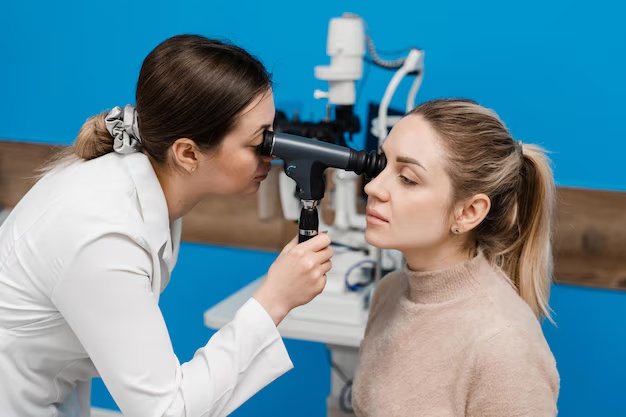Understanding Cataracts: A Comprehensive Guide
Cataracts are a prevalent eye condition that affects millions worldwide, yet many people do not fully understand what they are, how they develop, and what can be done about them. Whether you're here out of curiosity or because cataracts have impacted you or a loved one, this article aims to illuminate the subject with clarity and depth.
🔍 What is a Cataract?
A cataract is a clouding of the eye's natural lens, situated behind the pupil and the iris. This cloudiness disrupts the passage of light, resulting in blurred or foggy vision. Often associated with aging, cataracts can severely impact vision quality over time. The lens of the eye, which is primarily made of water and protein, loses its transparency as these proteins group together in clumps, leading to clouded vision.
Symptoms to Watch For
Cataracts typically develop slowly and can affect one or both eyes. Key symptoms may include:
- Blurred or Cloudy Vision: A gradual change in sight clarity.
- Increased Sensitivity to Light and Glare: Particularly problematic while driving at night.
- Difficulty Seeing at Night: Vision becomes notably worse in low-light conditions.
- Fading or Yellowing of Colors: Colors may appear less vibrant.
- Double Vision in a Single Eye: Seeing two images from one eye.
- Frequent Prescription Changes: Constant updates needed for glasses or contacts.
Understanding these symptoms is crucial for early detection and management.
🤔 What Causes Cataracts?
While age is the most significant factor, contributing to the majority of cases, cataracts can also be influenced by:
- Genetics: Family history can play a substantial role.
- Medical Conditions: Diabetes, for instance, heightens risk levels.
- Eye Injuries: Trauma can accelerate lens clouding.
- Sun Exposure: Long-term exposure to UV rays may damage lens proteins.
- Medications: Prolonged use of certain drugs like steroids can catalyze cataract formation.
- Lifestyle Choices: Smoking and heavy alcohol consumption are linked to increased cataract risk.
👨⚕️ Diagnosing Cataracts
If you suspect a cataract, a comprehensive eye exam by an ophthalmologist is the best course of action. During the exam, the doctor may:
- Assess Medical History: Discuss symptoms and personal/family medical background.
- Conduct a Visual Acuity Test: Determines how well you see at various distances.
- Perform a Slit-lamp Examination: Provides a magnified view of the anterior structures of your eyes.
- Use a Retinal Examination: Checks the back of your eye (retina) after pupil dilation.
- Tonometry Test: Measures eye pressure, although not directly related to cataracts, it's part of a comprehensive exam.
📅 Treatment Options: When to Consider Surgery
In the early stages, non-surgical measures such as updated eyewear prescriptions, anti-glare sunglasses, or magnifying lenses can enhance vision. However, as the cataract advances, affecting everyday activities, surgery becomes the viable solution.
Cataract Surgery
Cataract surgery is one of the safest and most common operations performed worldwide. The procedure involves:
- Phacoemulsification: The most prevalent method, where an ultrasound device breaks apart the cloudy lens, which is then removed and replaced with an artificial lens known as an intraocular lens (IOL).
- Laser-Assisted Surgery: An alternative approach using laser technology for specific surgical steps, offering increased precision.
Post-Surgery Recovery
After cataract surgery, recovery is typically quick. Many people notice improved vision within days:
- Rest Your Eyes: Avoid strenuous activity during the initial recovery period.
- Follow-up Appointments: Regular check-ups to ensure healing.
- Eye Drops: Use prescribed drops to prevent infection and inflammation.
🧩 Managing Cataracts Naturally
While surgery is definitive, some prefer to explore natural management strategies. Although not a replacement for medical intervention, the following can support eye health:
- Dietary Adjustments: Consuming foods rich in antioxidants like vitamins C and E, lutein, and zeaxanthin.
- UV Protection: Wearing UV-blocking sunglasses whenever outdoors.
- Regular Eye Checkups: Keeping track of your eye health can help detect cataracts early.
📝 Summary & Practical Takeaways
While cataracts are an age-related inevitability for many, understanding the intricacies can ease anxiety and improve management. Here’s a concise summary to illuminate key points:
🌟 Key Takeaways
- Stay Informed: Recognize early symptoms like blurred vision and glare sensitivity.
- Seek Professional Guidance: Regular eye exams can lead to timely diagnoses.
- Lifestyle Matters: Incorporate a balanced diet and UV protection to slow progression.
- Surgical Pathway: Surgery offers a safe and effective solution when necessary.
- Monitor Changes: Adjusting eyewear and lighting can manage early-stage symptoms.
By understanding what cataracts are, their causes, and treatment options, you’re in a better position to handle this common eye condition. Whether it's taking preemptive measures or contemplating surgery, knowledge empowers you to make informed decisions about your eye health. 😎
With evolving treatments and a broad understanding of cataracts, you have every opportunity to maintain clear, functional vision well into your later years.
